Refine search
Actions for selected content:
23990 results in Ancient history
Introduction
-
- Book:
- Prison, Punishment and Penance in Late Antiquity
- Published online:
- 05 September 2015
- Print publication:
- 05 June 2015, pp 1-22
-
- Chapter
- Export citation
Chapter 1 - Philosophical and domestic foundations
- from Part I - Punishment, reform and penance
-
- Book:
- Prison, Punishment and Penance in Late Antiquity
- Published online:
- 05 September 2015
- Print publication:
- 05 June 2015, pp 25-44
-
- Chapter
- Export citation
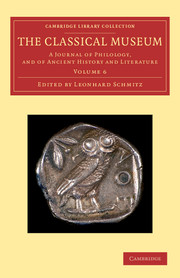
The Classical Museum
- A Journal of Philology, and of Ancient History and Literature
-
- Published online:
- 05 June 2015
- Print publication:
- 13 December 2012
- First published in:
- 1849
Abbreviations
-
- Book:
- Prison, Punishment and Penance in Late Antiquity
- Published online:
- 05 September 2015
- Print publication:
- 05 June 2015, pp xii-xvii
-
- Chapter
- Export citation
Bibliography
-
- Book:
- Prison, Punishment and Penance in Late Antiquity
- Published online:
- 05 September 2015
- Print publication:
- 05 June 2015, pp 387-414
-
- Chapter
- Export citation
Appendix II - Exiles in confinement
- from Appendices
-
- Book:
- Prison, Punishment and Penance in Late Antiquity
- Published online:
- 05 September 2015
- Print publication:
- 05 June 2015, pp 374-379
-
- Chapter
- Export citation
Appendices
-
- Book:
- Prison, Punishment and Penance in Late Antiquity
- Published online:
- 05 September 2015
- Print publication:
- 05 June 2015, pp 354-386
-
- Chapter
- Export citation
Chapter 8 - Exile, prison and the Christian imagination
- from Part II - Prison and punishment
-
- Book:
- Prison, Punishment and Penance in Late Antiquity
- Published online:
- 05 September 2015
- Print publication:
- 05 June 2015, pp 242-274
-
- Chapter
- Export citation
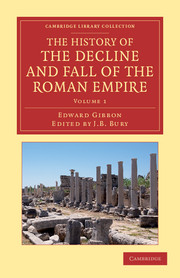
The History of the Decline and Fall of the Roman Empire
- Edited in Seven Volumes with Introduction, Notes, Appendices, and Index
-
- Published online:
- 05 June 2015
- Print publication:
- 14 February 2013
- First published in:
- 1896
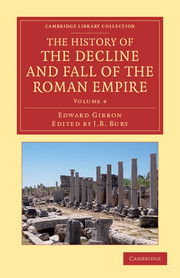
The History of the Decline and Fall of the Roman Empire
- Edited in Seven Volumes with Introduction, Notes, Appendices, and Index
-
- Published online:
- 05 June 2015
- Print publication:
- 14 February 2013
- First published in:
- 1898
Copyright page
-
- Book:
- Prison, Punishment and Penance in Late Antiquity
- Published online:
- 05 September 2015
- Print publication:
- 05 June 2015, pp iv-iv
-
- Chapter
- Export citation
Chapter 4 - Punishment, reform and penance in late Roman law
- from Part I - Punishment, reform and penance
-
- Book:
- Prison, Punishment and Penance in Late Antiquity
- Published online:
- 05 September 2015
- Print publication:
- 05 June 2015, pp 89-112
-
- Chapter
- Export citation
Chapter 2 - Punishment and reform in early imperial legal thought
- from Part I - Punishment, reform and penance
-
- Book:
- Prison, Punishment and Penance in Late Antiquity
- Published online:
- 05 September 2015
- Print publication:
- 05 June 2015, pp 45-63
-
- Chapter
- Export citation
Dedication
-
- Book:
- Prison, Punishment and Penance in Late Antiquity
- Published online:
- 05 September 2015
- Print publication:
- 05 June 2015, pp v-vi
-
- Chapter
- Export citation
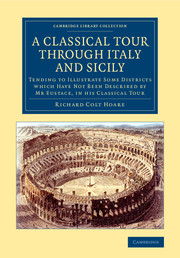
A Classical Tour through Italy and Sicily
- Tending to Illustrate Some Districts Which Have Not Been Described by Mr Eustace, in his Classical Tour
-
- Published online:
- 05 June 2015
- Print publication:
- 20 November 2014
- First published in:
- 1819
Maps
-
- Book:
- Prison, Punishment and Penance in Late Antiquity
- Published online:
- 05 September 2015
- Print publication:
- 05 June 2015, pp xviii-xx
-
- Chapter
- Export citation
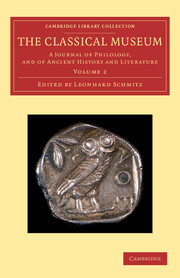
The Classical Museum
- A Journal of Philology, and of Ancient History and Literature
-
- Published online:
- 05 June 2015
- Print publication:
- 13 December 2012
- First published in:
- 1845

The Chaldean Account of Genesis
- Containing the Description of the Creation, the Fall of Man, the Deluge, the Tower of Babel, the Desruction of Sodom, the Times of the Patriarchs, and Nimrod
-
- Published online:
- 05 June 2015
- Print publication:
- 01 January 2015
- First published in:
- 1876

The Alps of Hannibal
-
- Published online:
- 05 June 2015
- Print publication:
- 06 November 2014
- First published in:
- 1866

The Classical Museum
- A Journal of Philology, and of Ancient History and Literature
-
- Published online:
- 05 June 2015
- Print publication:
- 13 December 2012
- First published in:
- 1850
